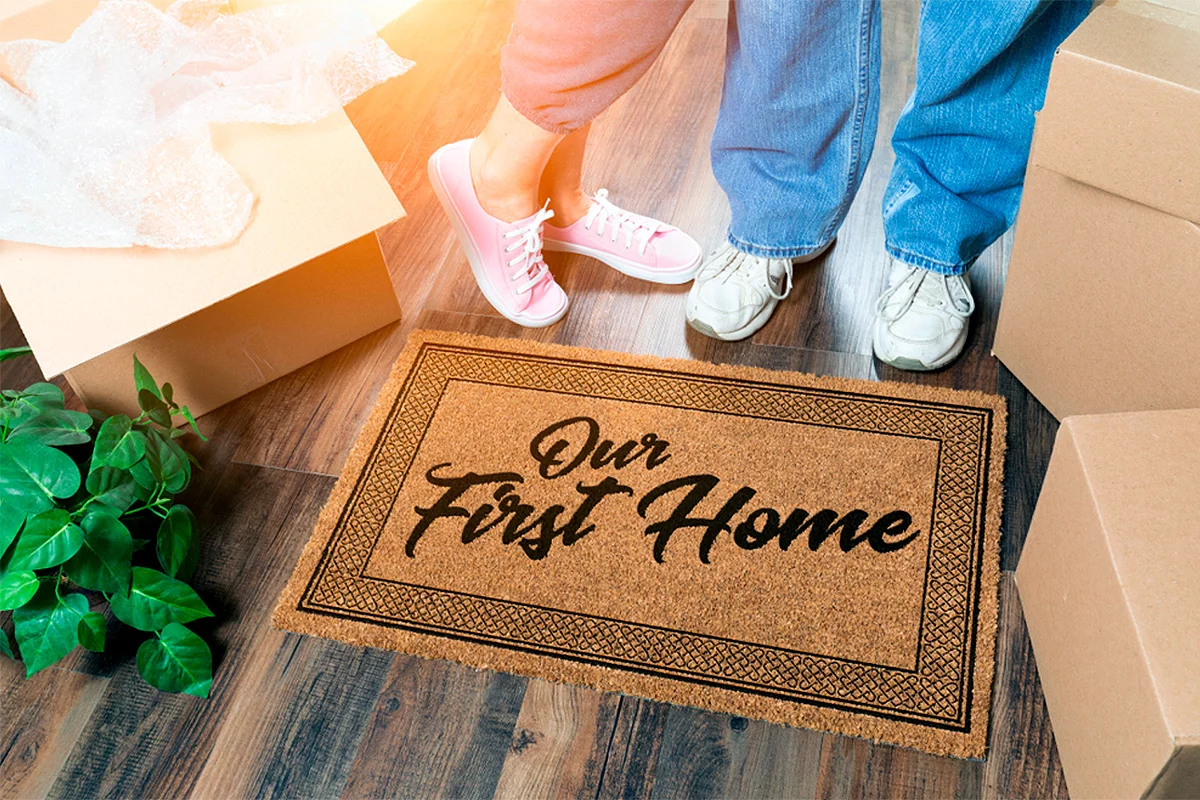Formerly known as mobile homes, manufactured homes are primarily sold through retail dealerships and offer the flexibility to be customized according to your needs and budget.
Manufactured homes provide an affordable alternative for home buyers, and you might be pleasantly surprised by the array of amenities available today. From walk-in closets and fireplaces to stainless steel appliances and even vaulted ceilings, these homes cater to your modern preferences.
If you’re considering purchasing a manufactured home, here’s what you should take into account.
Understanding Manufactured Homes
Manufactured homes are constructed in factories, adhering to construction and safety standards set by the U.S. Department of Housing and Urban Development (HUD). These homes are built on permanent chassis with wheels and are transported in one or more sections to be professionally installed on-site. Once in place, the wheels and axles are removed, and the homes are securely anchored. They can be set on either permanent or semi-permanent foundations.
In recent years, a new class of manufactured homes known as “CrossMod” has emerged. These homes are built to HUD standards in factories and then placed on permanent foundations. With features like drywall interiors, garages, and covered porches, CrossMod homes closely resemble site-built homes.
Modular homes are related to manufactured homes, but they are constructed according to local and state building codes, similar to traditional site-built single-family homes. Modular homes are transported in sections, or modules, to the home site, where they are assembled by local contractors and placed on permanent foundations.
It’s important to note that “tiny houses” do not fall under the category of manufactured homes, as they must meet the minimum size requirement of 320 square feet set by HUD standards.
Understanding Mobile Homes
While the terms mobile home and manufactured home are sometimes used interchangeably, there is a significant distinction. Mobile homes are factory-built homes constructed before June 15, 1976, when the federal HUD standards were implemented. Manufactured homes, on the other hand, refer to homes built after that date.
The manufactured home industry has made tremendous advancements over the past few decades, and the new models bear little resemblance to the stereotypical mobile home.
Purchasing a Manufactured Home
Most manufactured homes are sold through retailers, who offer both new and pre-owned options. Additionally, you can find existing manufactured homes through real estate agents, certain general real estate listing websites, and online manufactured home marketplaces. In some states, it is also possible to purchase from the owner of a manufactured home development.
Buying a manufactured home from a retailer is similar to purchasing a car but without the need for extensive negotiation. On the sales lot, you can explore model homes, choose from various customized features, and even apply for manufactured home financing — all in a single day. These homes are available in single-, double-, and triple-section floor plans, ranging from cozy one-bedroom, one-bath homes under 500 square feet to spacious four-bedroom, three-bath homes exceeding 2,500 square feet. The retailer typically handles the coordination of transport and installation.
Most manufacturers provide warranties that cover not only the structure but also the plumbing, heating, and electrical systems for a specific period, usually ranging from one to five years, as stated by the Manufactured Housing Institute. Some appliances may also come with their own warranty coverage. For detailed information, be sure to inquire with the seller.
Selecting a Manufactured Home Lot
In addition to choosing a home, finding the perfect location is crucial. You can opt for a leased lot in a manufactured home community or rent or buy land for your home.
Manufactured home communities come in various types. Some are exclusively for residents aged 55 and older, while others are open to people of all ages. The amenities offered in newer communities are diverse, ranging from expansive lawns and gardens to clubhouses, golf courses, pools, and waterfront lots.
If you decide to purchase land, it is important to check with your local government about zoning restrictions for manufactured homes. Other factors to consider include septic, electrical, and building permit requirements, site preparation, access to the property, and soil quality and stability.
Cost Considerations for a Manufactured Home
According to the latest data from the U.S. Census Bureau, the average sales price of a manufactured home in November 2019 was $81,600. However, the initial home price is not the only cost to take into account. There are also upfront costs for purchasing land, adding features like steps or patios, or placing the home on a permanent foundation. Sometimes, the cost of transporting and setting up the home is included in the price. It is crucial to fully understand all requirements and include these costs in your budget.
Residents in manufactured home communities typically pay ongoing ground rent, as well as fees for shared amenities, services, and utilities. These costs should be factored in when considering living in a community.
While it is often assumed that manufactured houses do not appreciate in value as much as site-built homes, an analysis by the Urban Institute suggests that some manufactured homes, along with the land they are situated on, may appreciate at similar rates. However, the value of a manufactured home alone might not increase as much as a site-built home because structures generally do not appreciate as much as the land beneath them.
Financing a Manufactured Home
You can secure financing for a manufactured home through a lender associated with a manufactured home retailer, similar to obtaining financing through an auto dealer. Manufactured home lenders and retailers have agreements to work together. Alternatively, you can find a lender independently who is willing to finance a purchase from a retailer.
There are two main types of loans used to finance a manufactured home: mortgages and chattel loans. Generally, manufactured homes must be permanently affixed to a foundation and titled as real property with the land to be eligible for mortgage financing. Other manufactured homes are titled as personal property and qualify for chattel loans.
Chattel Loans
Most manufactured homes are financed through chattel loans, as reported by the Consumer Financial Protection Bureau. Chattel loans typically have higher interest rates than mortgage loans, but they come with lower upfront origination costs and faster closing times. The loan terms for chattel loans are usually 10, 15, or 20 years, as opposed to the standard 30-year term for regular mortgages.
Manufactured Home Mortgages
Government-backed mortgages, including those from the Federal Housing Administration, U.S. Department of Agriculture, and Veterans Affairs, are available for newer manufactured homes. These home loans offer low down payment requirements and are issued by private lenders. FHA Title I loans are unique because they can be used to purchase or refinance a manufactured home or lot, or both, without requiring land ownership.
You may also be eligible for a conventional mortgage, which is not backed by the government. Two conventional mortgages designed specifically for manufactured homes that have features similar to site-built homes are the Fannie Mae MH Advantage and Freddie Mac ChoiceHome mortgages. Both of these options have down payment requirements as low as 3%.
Pros and Cons of Manufactured Homes
There is no one-size-fits-all when it comes to homes. Here are some key considerations to keep in mind when deciding whether to purchase a manufactured home.
Pros of Manufactured Homes
- Affordability: Manufactured homes are generally more affordable compared to other types of houses. According to the Urban Institute, the cost per square foot for a new manufactured home, excluding land, is up to 47% less than that of a similar site-built home.
- Customization: One of the advantages of manufactured homes is the ability to choose from a variety of amenities and upgrades, allowing for customization to fit your preferences.
- Energy Efficiency and Safety: Manufactured homes must adhere to HUD’s standards for energy efficiency and safety, providing homeowners with peace of mind.
Cons of Manufactured Homes
- Financing Challenges: Manufactured homes that are not permanently fixed to foundations and are not listed as real property with land may not be eligible for traditional mortgages. Loans available for homes titled as personal property often come with higher interest rates compared to traditional mortgages.
- Location Limitations: Certain cities have restrictions on manufactured homes, such as not allowing them or requiring larger lots compared to site-built homes. As a result, the options for where you can place your manufactured home may be limited. This is why a larger proportion of manufactured homes are found in rural or unincorporated areas, according to the Urban Institute.
Contact Sword Mortgage To Learn More About Your Options
Call (770) 757-5750 or complete our online form to speak with a loan expert at Sword Mortgage to get help navigating your options and find a loan that fits your needs today.




